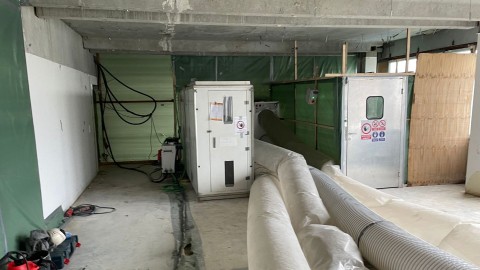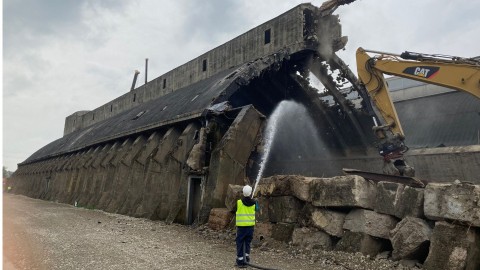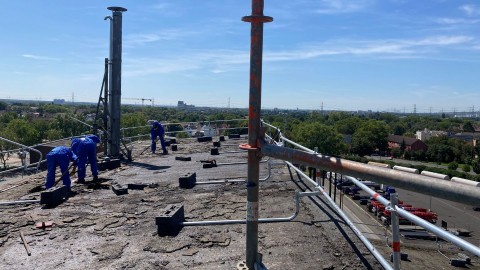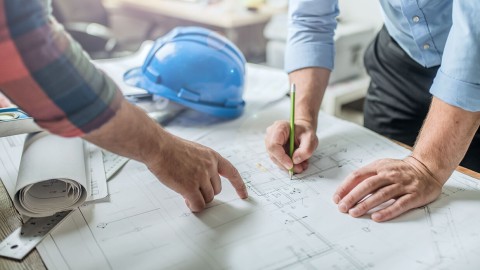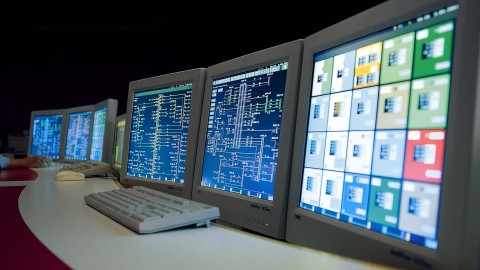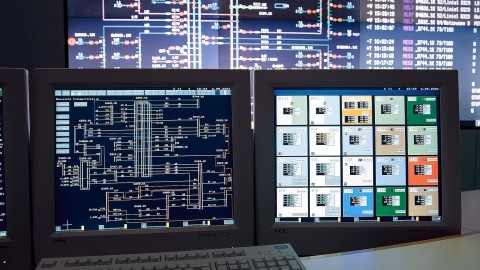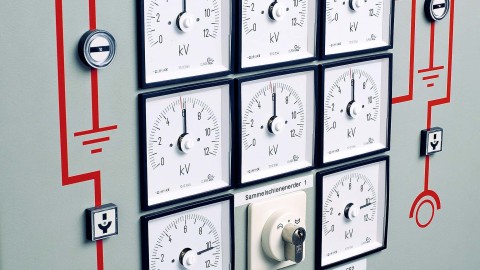Building demolition: The last step in a building's life cycle
Buildings are constructed with a clear function and a specific life cycle. However, there comes a point at which their use comes to an end – whether because production facilities are outdated, safety standards can no longer be met or a change of use is no longer economically viable. The demolition and dismantling of a building then marks the end of this cycle, but at the same time opens up new possibilities for the use of the freed-up space.
In this article, we explain how demolition works at Infraserv Höchst and why careful planning and implementation during this phase is crucial for a successful new start.
Every demolition is the basis for something new
The demolition of a building is much more than a simple destruction process – it creates space for new developments and opportunities. As outdated structures give way, space is created for modern construction projects, innovative uses and future-oriented concepts. At Industriepark Höchst, Infraserv is responsible for demolishing most of the buildings, not only planning, coordinating and supervising the process, but also bringing in an extensive network of experts – from demolition companies to specialized consultants such as pollutant experts or biologists who ensure that no rare species are overlooked in the vacant buildings. This comprehensive know-how enables us to work efficiently and purposefully on even the most challenging projects.
Demolition: more than just demolition
What many people don't know: Deconstruction begins long before the actual demolition. First of all, the focus is on the removal of harmful substances. Old buildings constructed before the early 1990s often contain hazardous substances such as asbestos, polycyclic aromatic hydrocarbons (PAHs), persistent chemical pollutants (PCBs) or synthetic mineral fibers (SMFs). These must be professionally removed before the heavy equipment moves in. This is where Infraserv's expertise comes into play – both in safely removing the pollutants and in managing occupational health and safety to comply with legal requirements and protect the health of everyone involved.
An example from Industriepark Höchst illustrates just how complex demolishing an office building can be. During the work, the experts discovered asbestos-containing plaster in the building's stairwell. This discovery turned the entire stairwell over seven floors into a decontamination zone, including permanent negative pressure and a four-phase airlock to ensure that no asbestos fibers could escape. Such findings not only delay the schedule, but also require the utmost care when implementing the decontamination measures.
Resource conservation and recycling for environmentally conscious demolition
Today, deconstruction is no longer just about demolition, but also about sustainability. In every Infraserv demolition project, we make sure to recycle or reuse as many of the building materials as possible. A good example of this is the use of demolished concrete as gravel in road construction. In this way, we help ensure that even the final stages of a building's life cycle are recycled.
We document all steps seamlessly – from pollutant clean-up to disposal. In this way, we offer our customers maximum transparency and security, as many companies attach particular importance to ensuring that everything is disposed of in a traceable and correct manner. Some companies nevertheless decide to take the disposal into their own hands – here, too, we naturally offer full support and documentation.
The final step: from demolition to a new start
Although the demolition and dismantling of a building marks the end of its lifespan, it also creates the basis for future developments. Building K801 in Industriepark Höchst is a particularly vivid example of this in practice. The former Höchst AG engineering building stood empty for over a decade after its use ended. Infraserv took over complete coordination of the demolition. The Y-shaped building was an imposing structure that had become very outdated over the years. After intensive remediation, the demolition was carried out in stages and now, as the last underground elements are being removed and the excavation pit is being backfilled, planning for a new project is already well underway on this very site. This is an impressive example of how Infraserv supports the entire life cycle of a building.
This article concludes our exciting journey through the building life cycle, which we undertook together as part of the Infraserv Facility Management newsletter (German only) . We looked at the various phases – from designing and construction to operation and demolition – and it became clear why it is always necessary to work with an experienced expert and service provider.

